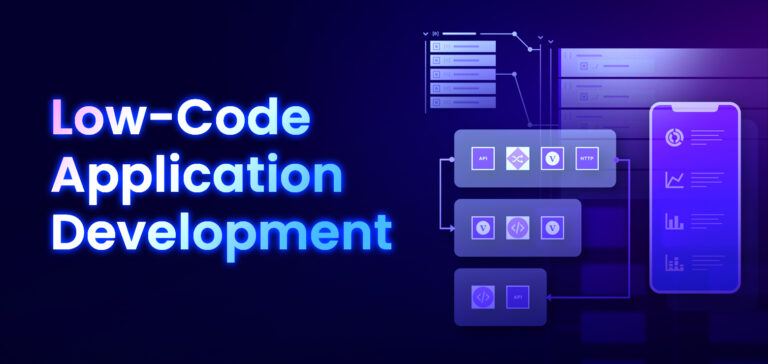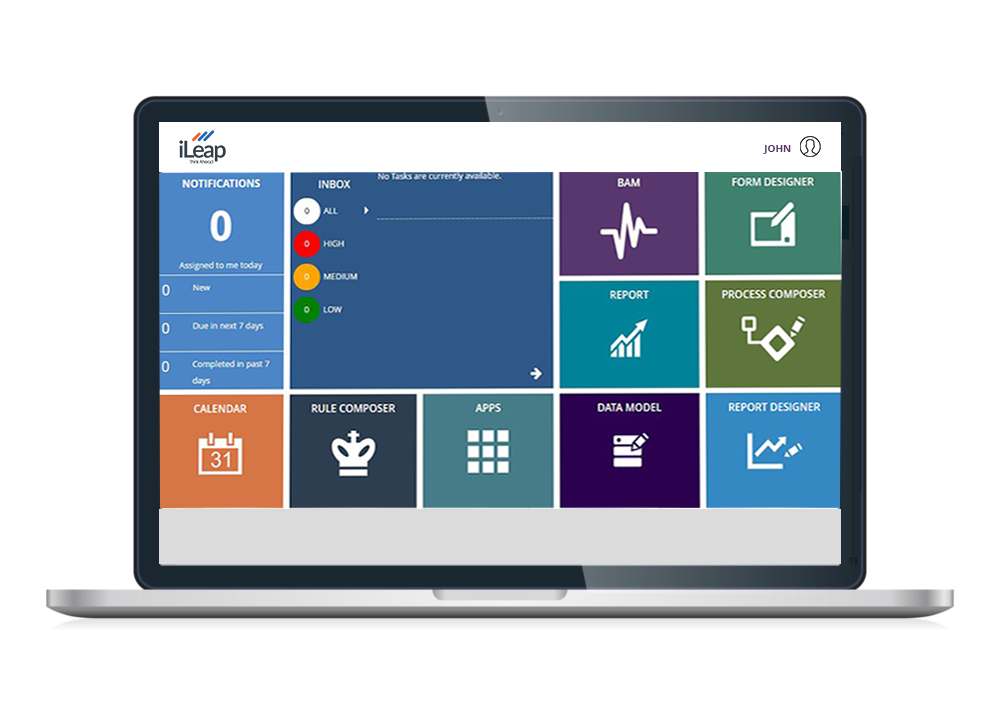Handy Advice To Selecting Low-code platforms for application development
Wiki Article
Benefits Of Low-Code Application Development Terms Of Speed
Low-code application development significantly enhances the speed of development due to a variety of crucial factors. Development Environment:
Drag-and-Drop Interfaces: Low-code platforms provide visual tools for designing applications. Drag-and-drop tools allow developers to build apps quickly without having to write code.
Pre-built Templates and Components: A lot of low-code platforms have templates and components that are pre-built, which enable developers to swiftly develop and test applications without starting from the beginning.
Coding requirements that are less invasive:
Automated Coding Generation Low code platforms automatically generate code using the visual model created by the developers. This eliminates the need for manual code writing and speeds up the process of development.
Reusable component: Developers may use the same components for various projects. This helps reduce the time spent writing code and testing.
Streamlined Collaboration:
Low-code platform tools typically include versions control, testing or deployment. This enables seamless collaboration between teams.
Citizen Development (Citizen Development) User and non-developers of business applications are able to participate in application development making use of intuitive interfaces. This reduces the bottleneck created by limited accessibility of professional developers.
Rapid prototyping and iteration:
Rapid Prototyping: Designers can quickly build prototypes that can be used to test ideas and collect feedback, which results in faster the cycle of iterations.
Easy Modifications. Visual development makes it easier for users to modify and update their applications.
Pre-built Integrations:
API Integrations: Low-code platforms typically have pre-built connectors for APIs and services that are popular making it easier to connect external systems.
Data Integration: The built-in tools simplify the process of connecting to databases and other sources, speeding the process of development.
Deployment and Scaling:
One-Click deployment: Many platforms that use low-code offer an option to deploy applications, which can reduce the time and effort.
Cloud-based solutions: Cloud low-code platforms are capable of scaling and infrastructure management. Developers can then concentrate on the application logic and functionalities rather than deployment logistic.
The primary benefit of low-code application development in terms of speed, is its capacity to automate and simplify a variety of aspects of the process. This allows quicker delivery of applications and faster adaptations to evolving demands. Have a look at the most popular view website about Low-code Platform for application development for website recommendations including cross platform mobile dev, app development platform, develop web app, azure sql server, app platforms, push notifications, push alerts, jdbc server, build with docker, push notifications and more.

The Benefits Of Developing Low-Code For Governance And Security
Low-code development has several benefits regarding security and governance. These are crucial for ensuring applications are secure, reliable and well-managed throughout their entire lifecycle. Here are a few of the main benefits.
Unified management console Low code platforms usually provide a central administration console where administrators are able to manage all the applications and ensure consistent governance within the company.
Role-Based Access Control: These platforms have robust control based on roles that lets administrators define rules and enforce these policies. This ensures that only authorized users have the ability to access or modify particular parts of an application.
Compliance and Regulatory Applicability:
Built-in Compliance Features: Many low-code applications are designed to be compliant with industry standards and regulations (e.g. GDPR, HIPAA). They provide frameworks and tools that ensure applications meet the specifications.
Audit Trails and Logging Comprehensive logs and audit trails can be incorporated to allow companies to monitor changes in access, and monitor access and compliance.
Additional Security Measures
Data Encryption Low-code platforms often include built-in encryption of information in transit and at rest, which protects sensitive information.
Security Certifications - A lot of lowcode providers hold security certifications such as ISO 27001 (or SOC2), which demonstrate the adherence of high security standards. Customers can rest assured that these companies adhere to the standards.
Automated Security Updates
Regular patching and updates: Low-code platforms handle most security patches and updates in a way. They make sure that applications are safe from the most recent attacks without requiring developers to intervene manually.
Security Monitoring: Tools to conduct continuous security monitoring are included. They provide immediate alerts and insights into possible security issues.
Data Governance
Data Access Policies: These systems enable organizations to define and enforce policies on data access, ensuring that data is accessible to authorized users and properly used.
Data Masking and Anonymization: The built-in tools for masking data and anonymization help protect sensitive data, particularly in the testing and development environment.
Consistent application lifecycle management:
Development and deployment Pipelines Low-code platforms provide integrated development and deployment pipelines, which include security inspections. These ensure that security is maintained throughout the entire lifecycle of the application.
Version Control. Integrated version management can help identify and reverse any modifications made to the application, ensuring that its integrity is preserved.
User Authentication Authorization
Single Sign-On - Support for single sign-on (SSO), and other advanced authentication mechanisms simplify management and enhances security.
Multi-Factor Authentication (MFA) A number of platforms have built-in support for multi-factor authentication. This adds an additional layer of security to access applications.
Monitoring of Policy Enforcement
Policy Templates: Low-code platforms often include pre-defined templates for security and governance that enable organizations to quickly adopt policies.
Compliance Monitoring Tools: They provide continuous monitoring and report on the status of compliance. This makes it easier to detect potential issues and address them proactively.
Integrating with Existing Security Infrastructure
Seamless Intergration: Low code platforms are designed to allow seamless integration with the existing security tools and equipment, like Identity Management Systems, SIEM Solutions (Security Information and Event Management), and Firewalls.
API Security API Security features allow integration with other systems, securing data and maintaining integrity of the applications.
Best practices and Training
Guided Best Practices : Many platforms offer guidelines and best practices to assist non-developers to adhere to security standards.
Security Training Some low code providers offer security training and resources to users to educate them on how to maintain and build secure applications.
Overall, low-code application developers offer security and governance benefit that allows them to build and manage their applications in a controlled, regulated and secure way. These platforms have the frameworks, tools and regulatory compliance needed to secure sensitive data of customers and enforce policy. They also keep regulatory compliance in check and ease the administration and supervision of the development process. See the best Legacy application modernization with Low-code for site tips including cross platform mobile app development, application development platforms, app dev platform, azure sql server, jdbc server, application modernisation, paas service, low code platforms, build with docker, app modernisation and more.

The Benefits Of Developing Low-Code To Collaborate And Streamline Workflow
Low-code applications offer a number of advantages in terms of workflow and collaboration, making it the perfect choice for businesses seeking to improve team efficiency and streamlining the development process. These are the major advantages.
Unified Development Environment : Low-code platforms provide a single, unified environment where all team members are able to work efficiently including business analysts, designers and stakeholders. This helps eliminate barriers.
Visual Development Tools: Low-code platforms are easy to use and have the drag-and-drop interface. This lets non-technical members of the team to participate in the development phase and ensures that the business requirements are captured accurately.
Communication Enhanced:
Real-Time Collaborative Features: A lot of platforms using low-code provide real-time collaborative features, including simultaneous editing, comments and instant feedback. These features facilitate the communication process and decrease time spent in back and forth conversations.
Workspaces shared by teams. Teams are able to collaborate on shared workspaces. In this workspace, they can see, edit, and talk about various project components.
Streamlined Workflow
Built-in tools for managing projects Lowcode platforms usually come equipped with integrated tools that assist teams in planning, tracking and coordinating their progress. This includes tasks assignation, progress monitoring, and management of deadlines.
Workflow Automation - Automating routine tasks or workflows permits teams to concentrate their energy on more strategic initiatives and tasks, improving the overall efficiency of the company.
Speedier iteration cycles:
Rapid prototyping. Low-code platforms allow quick prototyping. This provides rapid feedback and improvement.
Support for agile development: Using agile practices allows teams to be continuously working in sprints. This makes it simpler to change and deliver smaller steps to improve functionality.
Accessibility for non-developers
Citizen-driven development platforms permit business users to modify and create applications without requiring a lot of programming knowledge. This helps IT and development teams to concentrate on other projects and respond faster to the business needs.
Training and Onboarding. Intuitive tools and extensive training materials can help a new team member get up-to-speed increasing the overall quality of collaboration.
Centralized Knowledge Sharing and Documentation:
Documentation integrated Low-code features typically permit you to create and manage documents within the platform. All information about your project is centrally accessible and easy to access.
Knowledge Repositories : Teams can build knowledge repositories that include templates, best practices and reused components. This helps in sharing knowledge and reduces duplication of efforts.
Consistency in Standardization
Standardized Components. Utilizing standard components that are pre-built allows for consistency throughout all software. This allows team members to understand and work with different aspects of their projects.
Governance and compliance Governance and compliance frameworks that are built-in to assure that all applications are created in line to organizational standards, regulatory requirements and the quality standards. They reduce the risk of not complying and guarantee that the applications are compliant with specifications.
Feedback and Improvement:
Integrated Feedback: Low-code platforms provide users with integrated feedback mechanisms that allow them to provide users with feedback quickly on their applications. The feedback is then incorporated into the application development process.
Continuous Improvement: The capacity of quickly iterating and deploying changes based upon feedback ensures that applications are continuously improved, aligning closely with the goals and needs of the users.
Visualization and Reporting:
Real-Time Analysis: Analytics and reporting tools built into the software provide instantaneous information about project progress, user interaction and performance. This allows for the use of data to make decisions.
Visual Workflow Maps: Tools for mapping processes or workflows are helpful for teams to comprehend their processes. They also help to identify the bottlenecks that are present, as well as areas that require improvement.
Low-code apps offer a variety of advantages in collaboration and workflow. It is able to bring diverse teams into one place, streamline communications and streamline certain processes. This creates more effective and agile development environment that is collaborative.
